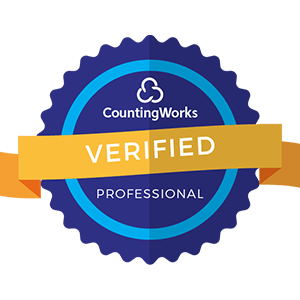
Effective leadership and management are crucial for guiding organizational strategy, managing teams, and ensuring compliance in core business processes like human resources, payroll, and finance. With proper practices, business leaders can positively impact employee satisfaction, productivity, and bottom-line results. This comprehensive guide examines proven techniques to enhance leadership and management capabilities for better organizational outcomes.

Leadership and management drive an organization's culture, set the tone for performance expectations, and determine whether strategic goals will be met. As Jim Collins noted in his acclaimed book Good to Great, having the right leaders in critical roles separates successful companies from the rest:
"The executives who ignite transformations from good to great start not with 'where' but with 'who.' They start by getting the right people on the bus, the wrong people off the bus, and the right people in the right seats."
Great leaders exhibit emotional intelligence, integrity, and exemplary people skills to rally their teams. Skilled managers translate objectives into executable plans and oversee processes efficiently. When leadership and management are aligned and effective, organizations thrive.
According to a Gallup study, poor management costs U.S. companies up to $1 trillion per year in lost productivity. Common pitfalls include micromanaging employees, failing to communicate vision, and inability to develop talent. On the other hand, the most successful organizations invest in management training and hire leaders who align with their values.
Optimizing leadership and management practices is essential for any business looking to improve, whether a startup or a Fortune 500 firm. A global survey of over 15,000 leaders conducted by Zenger Folkman found that the top 10% of leaders have a massive impact on critical outcomes like retention, profitability, employee engagement, and customer satisfaction. Improving leadership effectiveness pays tremendous dividends.
The importance of leadership and management stems from their immense influence on employees, company culture, and performance results. Deloitte's 2016 Global Human Capital Trends report found that 84% of executives rated building strong leaders as an "urgent" or "important" priority. Businesses must prioritize developing current and future leaders to remain competitive.

Exceptional leaders possess and continuously develop skills to guide teams, manage change, and deliver results. Here are five fundamental leadership capabilities that drive organizational success:
Strategic leaders take a broad, future-focused perspective to recognize emerging opportunities and challenges. They set a vision and identify long-term goals and priorities to gain a competitive advantage. According to McKinsey research, strategic thinking was ranked as the most critical capability for CEOs to demonstrate.
A study by Kaplan Financial Knowledge Bank examined skills considered most important for strategic leaders. The top five were thinking creatively and innovatively, managing complexity and ambiguity, understanding diverse perspectives, setting vision and purpose, and driving transformational change. Leaders adept in these areas can guide their organizations to new heights.
Leaders must communicate a compelling vision and strategy to gain organizational buy-in. They adapt their communication style to connect better with diverse audiences. Influential leaders use storytelling and impactful messaging to inspire teams.
According to the Ivey Business Journal, strategic communication skills like crafting memorable speeches, relating to others effectively, and promoting open dialogue are hallmarks of successful leaders. Leaders at iconic companies like Apple, Microsoft, and GE were masters at communicating in inspirational ways.
Great leaders are responsible for developing leaders around them to create a talent pipeline. They coach teammates, provide constructive feedback regularly, and create opportunities for people to gain exposure and skills. Developing others leads to more engaged, productive teams.
As McKinsey highlights, leaders who emphasize talent development produce better business results. They nurture people's strengths, give coaching and feedback, and provide mentors. This leads to more capable leadership teams and future succession options.
Leaders adept at change management communicate the need for change and guide people through uncertainty. They assess change readiness, identify advocates and blockers, and tailor communications to address concerns. This enables smoother transitions when implementing significant initiatives.
According to Prosci's research, effective sponsorship of change by leaders is one of the most vital factors for change success. Leaders must be visible role models who build enthusiasm. They understand change adoption patterns and customize approaches to each audience.
VUCA (volatility, uncertainty, complexity, ambiguity) is the norm in today's business environment. Leaders must demonstrate resilience in the face of adversity and agility to adjust strategy as circumstances rapidly shift. They stay focused on solutions and help their organizations adapt.
The Harvard Business Review recommends leaders build resilience skills like managing stress, tuning emotions, nurturing relationships, embracing positivity, and recognizing thinking traps. This inner strength compounds with experience to create mature, agile leaders.
Organizations should assess leadership bench strength in these critical areas and develop programs to close gaps. Executive coaching, rotations, mentoring, and formal learning help leaders continually improve their capabilities. Leadership development is an investment that boosts performance across the enterprise.
While leadership focuses on setting a vision and driving change, management is centered on achieving consistent results through processes, systems, and people. Outstanding managers exhibit people skills, technical expertise, and a results orientation.
Here are five hallmarks of managers who lead teams to success:
Like leaders, great managers genuinely invest in mentoring and developing team members. They know each direct report's strengths and development needs and delegate projects to challenge people. Excellent managers provide timely coaching and candid feedback.
As noted by Gallup, manager-led development is far more effective than passive training. Managers who hold development discussions, build strengths, and set clear goals to improve engagement and performance. [9] Managers should invest at least one hour weekly to develop each team member.
Skilled managers build cohesive teams where members feel valued. They promote collaboration, manage conflicts, and foster positive relationships among team members. Strong team dynamics translate to higher trust, engagement, and performance.
A study published in MIT Sloan Management Review found that managers account for up to 70% of variance in team engagement. Managers who cultivate team inclusion, psychological safety, and clear direction create the highest-performing teams.
Successful managers share information frequently and clearly with their teams. They host regular check-ins to provide context behind priorities and discuss progress. Transparent communication and active listening help prevent ambiguity and frustration.
The Harvard Business Review recommends managers have structured team conversations on strategy, problem-solving, status updates, and career development. Consistent and inclusive communication builds mutual understanding.
Proficient managers break down organizational objectives into specific, measurable goals for their departments and teams. They plan projects meticulously and set clear expectations. Team members understand precisely how their work ladders to departmental and company goals.
McKinsey found that managers skilled at translating strategy into goals and key results (OKRs) have teams that deliver up to 60% higher performance. Aligned goals cascade throughout the organization.
Effective managers design and improve processes to enhance team productivity and output quality. They eliminate duplicative work, automate where possible, streamline cross-functional processes, and track key performance metrics. Well-designed processes increase consistency and efficiency.
Harvard Business Review notes that excellent process management requires a broad system-wide view and meticulous attention to detail. Managers should continually review processes with an eye for inefficiencies, inconsistencies, and frustrations to target. Smooth operations translate to improved experiences for customers and colleagues.
The very best managers balance focus on people and results. They lead teams with care and empathy while driving them to achieve company objectives. Their ability to inspire teams and deliver expected outcomes makes them invaluable assets.
While foundational leadership skills are enduring, the nature of business is evolving. New capabilities are rising in importance for next-generation leaders. Here are four areas for leaders to develop:
As businesses diversify their workforce and expand globally, leaders require cultural intelligence (CQ) to unite team members from varying backgrounds. This includes appreciating different perspectives, avoiding stereotyping, and tailoring communications to resonate across cultures. According to research, CQ boosts collaboration, innovation, and bottom-line performance.
Leaders must keep pace with emerging technologies like artificial intelligence, augmented reality, and big data analytics. They need just enough hands-on knowledge to ask intelligent questions and make informed decisions. Technology expertise is now expected to drive competitive advantage.
Design thinking teaches leaders to dive deep into customer problems before seeking solutions. It provides techniques like needs analysis, prototyping, and testing to develop innovative products and services. Deloitte found that organizations, where leaders encourage design thinking are far more likely to thrive amid disruption.
Agile frameworks like Scrum and Kanban spread beyond software development to product, operations, and marketing teams. Leaders adopt agile methods for faster experimentation, customer feedback, and iterative delivery. This accelerates value creation.
Forward-looking organizations are developing these skills through diverse assignments, access to emerging technology, and partnerships with external experts. This expands leaders' perspectives while keeping them anchored to business priorities.
Many research-backed methods can develop leadership and management excellence at all levels. Here are ten techniques organizations should consider:
One-on-one coaching helps leaders gain insights and build critical skills through consistent practice and feedback. Coaching is especially beneficial for new leaders or those transitioning to more complex roles. Executive coaching typically has an ROI of 5-7x the cost as leaders dramatically improve strategic thinking, team leadership, and personal productivity.
Formal multi-month leadership development programs enable managers to learn new skills while taking on strategic projects. Robust programs combine learning sessions, assessments, cohort networking, and executive coaching. Companies like GE and Google have built acclaimed leadership programs that create networks of skillful leaders. On average, participating leaders deliver over 3x of the financial results upon completion.
Short-term assignments in other departments or geographies build a broader perspective. They expose high-potential managers to different functions, teams, and markets to prepare them for greater responsibility. Rotations expand leaders' thinking and ability to collaborate across the organization. Research shows they pay off through higher engagement, faster promotion rates, and long-term retention.
In mentoring relationships, seasoned leaders share their expertise and guide up-and-coming managers. Mentorship accelerates the growth of mentees and keeps mentors engaged. Four out of five executives attribute much of their development to mentorship. Matching emerging leaders with seasoned mentors pays dividends for all parties and the organization.
Examining wins and failures after major initiatives or events helps leaders identify what worked well, areas for improvement, and key learnings. This fosters agility and continuous improvement. The US Army coined after-action reviews to exchange feedback without blame. Leaders reflect on successes to repeat them and failures to correct them. The process builds organizational knowledge.
Facilitated peer discussion groups enable leaders across the organization to come together and solve shared challenges. The diverse perspectives spark creative ideas and build relationships. Roundtables help leaders think outside their function and level. They solve issues collaboratively that impact the broader business. The peer connections increase knowledge sharing.
Reading and discussing books on leadership, culture change, team performance, or other relevant topics gives managers shared frames of reference and new insights to apply. Book clubs make learning social and enjoyable. Leaders debate different viewpoints on acclaimed books to enrich their thinking.
Time spent shadowing other leaders exposes managers to different leadership styles and responsibilities. It builds empathy for the challenges leaders face across the business. Job shadowing increases strategic awareness and connection to other functions. It helps leaders experience realities firsthand so they can make better decisions.
Surveying employees on engagement, inclusion, ethics, innovation, and other cultural facets provides valuable input to managers on team health. Leaders can course correct as needed.
Online surveys provide anonymous feedback at scale to surface issues and trends. Managers should review results with their teams and collaborate on improvements.
This combination of assessments, experiential learning, and culture-building activities develops well-rounded, responsive leaders and managers at all levels.

Leadership development approaches should vary based on where managers are in their careers. Here are impactful practices tailored to three standard stages:
This differentiation develops leadership muscles at each stage of the pipeline.
Beyond organization-wide leadership, having skilled, engaged managers overseeing core business functions is vital for efficiency and performance. Here are leadership best practices in three critical areas - human resources, finance, and payroll:
HR leaders ensure their organizations have the right talent, structures, and culture to achieve strategic goals. Recommended practices include:
According to Bersin's research, HR leaders rated as "excellent" by their teams excel in driving culture and change, talent strategies, and employee experience. They balance data, technology, and human interactions.
Finance leaders enable data-driven decisions by providing accurate financial information. They also manage costs and risks. Best practices are
McKinsey recommends that CFOs focus their leadership on financial stewardship, strategizing, catalyzing performance, and talent development to maximize impact. Finance teams must provide insights, not just reports.
Payroll leaders ensure employees are paid accurately and on time. They also manage tax and regulatory requirements. The top practices are:
According to American Payroll Association guidelines, payroll leaders should demonstrate operations excellence, technical mastery, compliance rigor, strategic alignment, and team development.
Leaders versed in essential functions like HR, finance, and payroll enable their businesses to perform optimally while remaining legally compliant.
Leadership and management excellence significantly impact an organization's performance and culture. Developing capable strategic leaders and operational managers is a worthwhile investment that pays ongoing dividends through more engaged teams, better execution, and more substantial business outcomes.
By focusing leadership and management development on the most critical skills and capabilities, organizations see substantial improvements in productivity, innovation, and bottom-line results. The practices explored in this article offer tested methods to strengthen leadership and management at all levels for long-term success.


